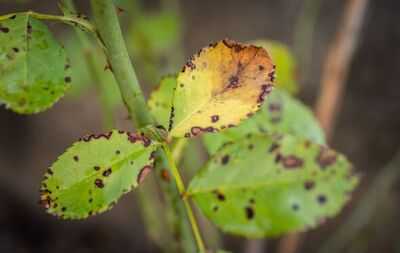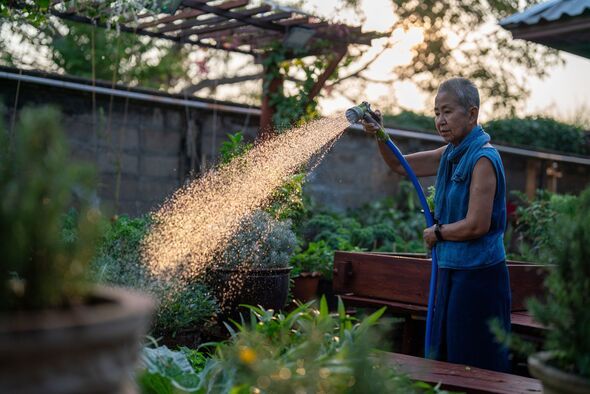

As the hot and humid weather continues, gardeners are being advised by Chris Bonnett, founder of GardeningExpress on the summer plant diseases to look out for, how to identify them and what can be done to maintain a healthy garden. Most plant diseases love warm, damp environments with poor air circulation, so it's important to maintain good plant hygiene to help prevent problems. Some of the more common plant diseases that tend to occur in summer include late blight, mildew, root rot, and rust.
These can be incredibly frustrating when your plants have been flourishing, only to suffer due to avoidable diseases. Early warning signs of plant disease can show in various ways, from wilting and stunted growth to yellow and brown spots on leaves.
Other signs that disease has occurred can also include powdery white spots, mushy leaves and stems.
You can prevent this through regular garden maintenance and by ensuring good plant hygiene throughout the seasons.
Avoid overcrowding plants; this can reduce air flow and create the warm, damp environment that disease loves.
Make sure your soil has the correct nutrients. If plants aren't well nourished, they can become weaker and more susceptible to issues.
It's also important to make sure plants are placed in clean pots, and not in infected soil, this will help to break the cycle of disease and promote healthier growth.
 Top six mistakes gardeners make that encourage plant disease:
Top six mistakes gardeners make that encourage plant disease:
1. Overcrowding plants
When plants are overcrowded, there isn't enough space for proper air circulation, and this lack of airflow prevents damp areas from drying out, creating ideal conditions for bacteria to multiply and spread disease to nearby plants.
2. Watering too late in the day
With temperatures dropping in the evening, watering plants too late doesn't give them enough time to dry. Moisture remains on the leaves for longer and creates a perfect environment for pathogens to thrive.
3. Ignoring early warning signs
Early signs of plant disease can vary, but any abnormal changes like wilting, yellowing, or spotting are key indicators. Other symptoms may include unexpected leaf drop and stunted growth - catching these signs early can help prevent further damage.
4. Using poor soil
If the soil you have used is too compact and doesn't drain well, this can cause plant disease like root rot. If the soil lacks the correct nutrient levels, your plants may not receive the nourishment they need, making them more vulnerable to disease.
5. Skipping a garden cleanup
Neglecting regular garden maintenance like seasonal pruning, removing debris, and applying mulch can create an environment where plant diseases thrive. The longer a garden is left without a proper cleanup, the more likely it is that issues will spread to healthy plants.
6. Not cleaning pots before reusing
If you've removed plants from pots that were struggling or showed signs of disease, it's essential to clean them thoroughly. Remove any old soil and wash and dry the pot before reusing it to prevent the spread of disease to new plants.